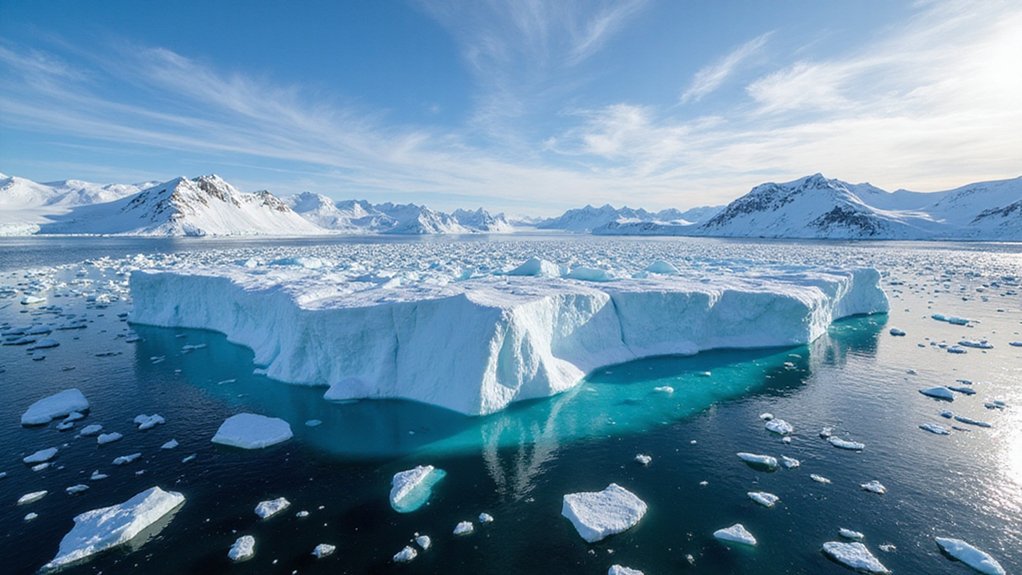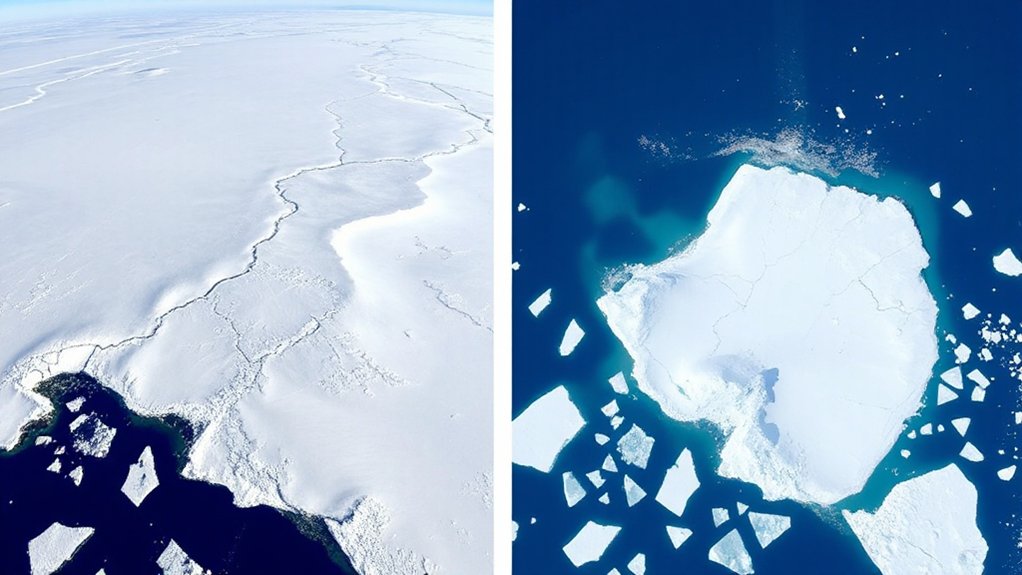One of Antarctica’s oldest and largest icebergs is breaking apart after nearly four decades of existence. The massive ice formation known as A23a, which calved from the Filchner-Ronne Ice Shelf in 1986, has begun to splinter into thousands of smaller pieces as of May 2025.
When A23a first broke away from Antarctica, it was truly enormous – more than twice the size of Greater London and weighing close to one trillion tons. By early 2025, it had shrunk to about 1,770 square kilometers, still an impressive size but showing the effects of its long journey.
For several decades, A23a remained stuck in place, grounded on the seafloor near Antarctica. It wasn’t until January 2023 that the iceberg finally began drifting northward. This movement ultimately sealed its fate as it encountered warmer waters.
Scientists tracking A23a report that in recent weeks, chunks as large as 400 square kilometers have broken off. Satellite images show the iceberg is “basically rotting underneath” as it’s exposed to the warmer northern waters. The massive berg has been moving at speeds of up to 20 kilometers per day during certain phases of its journey. Experts say the shattering process could continue for months or even years.
The breakup has been accelerated by several factors, including warmer ocean temperatures, wave action, and seasonal weather patterns. This fragmentation process resembles what happened to A-68A, which completely melted away by April 2021 after a three-year journey. Ocean tides can trigger massive breakups, playing a key role in the iceberg’s disintegration.
While iceberg calving is a natural process, scientists link the increased rate of ice loss from Antarctica to human-caused climate change and warming oceans. These changing conditions may be creating an imbalance in Antarctic ice.
As A23a fragments, it creates potential hazards for ships traversing the region, with countless smaller bergs now littering surrounding waters. The iceberg briefly threatened wildlife near South Georgia Island but ultimately drifted past without major ecological impact.
Monitoring agencies, including the U.S. National Ice Center, continue to track A23a’s remnants using satellite technology that works regardless of weather conditions or darkness, documenting the final chapter of this remarkable ice giant’s journey.
References
- https://en.wikipedia.org/wiki/Iceberg_A-68
- https://earthobservatory.nasa.gov/images/154625/antarctic-iceberg-downsizes
- https://phys.org/news/2025-09-king-seas-giant-iceberg.html
- https://www.livescience.com/planet-earth/antarctica/worlds-largest-iceberg-a23a-is-disintegrating-into-thousands-of-pieces-alongside-penguin-refuge-earth-from-space
- https://phys.org/news/2025-07-tides-trigger-massive-antarctic-iceberg.html









